Publication Information
ISSN 2692-1529
Frequency: Continuous
Format: PDF and HTML
Versions: Online (Open Access)
Year first Published: 2019
Language: English
| Journal Menu |
| Editorial Board |
| Reviewer Board |
| Articles |
| Open Access |
| Special Issue Proposals |
| Guidelines for Authors |
| Guidelines for Editors |
| Guidelines for Reviewers |
| Membership |
| Fee and Guidelines |
 |
The Role of Ukrainian Aquaculture in Restocking of Wild Acipenseridae Spp. Populations and Development of Commercial Sturgeon Aquaculture in Ukraine
Artem Ripenko1, Tetiana Yakovlieva2, Kostiantyn Demianenko3*, Vasyl Kovalenko4
1Scientific Institute of Public Law, 03035, Kyiv, G.Kirpy str. 2a, Ukraine
2State Agency of Melioration and Fisheries of Ukraine, 04053, Kyiv, Sichovykh Striltsiv str. 45-a, Ukraine
3Institute of Fisheries and Marine Ecology, 71118, Berdiansk, Consulska str. 8, Ukraine
4National University of Life and Environmental Sciences of Ukraine, 03041, Kyiv, Henerala Rodimtseva str. 19, Ukraine
Received Date: April 26, 2023; Accepted Date: May 02, 2023; Published Date: May 06, 2023;
*Corresponding author: Kostiantyn Demianenko, Institute of Fisheries and Marine Ecology, 71118, Berdiansk, Consulska str. 8, Ukraine, Email: s_erinaco@ukr.net
Citation: Ripenko A, Yakovlieva T, Demianenko K, Kovalenko V (2023). The Role of Ukrainian Aquaculture in Restocking of Wild Acipenseridae Spp. Populations and Development of Commercial Sturgeon Aquaculture in Ukraine. Jr Aqua Mar Bio Eco: JAMBE-119.
DOI: 10.37722/JAMBE.2023202
Abstract
Ukraine is the one of countries of origin for a number of Acipenseridae species. Any sturgeon fishery is absolutely prohibited in Ukraine since 2000, and the all historically described for Ukrainian water bodies Acipenseridae species have been included to the National Red Book since 2009. An important step towards implementation of the strategy for conservation and restoration of sturgeon populations was the adoption of the “Action Plan for the Conservation of Sturgeons (Acipenseridae) in Ukraine for 2021-2030”, approved by the Ministry of Environmental Protection and Natural Resources of Ukraine in 2020. Historically, based on natural circumstances, Ukraine is conducting artificial reproduction of wild sturgeon populations mostly on the Black Sea basin. Artificial reproduction of the Azov Sea basin sturgeon populations has been almost stopped since 2009, when the all Acipenseridae species have been included to the Red Book of Ukraine. Regarding commercial sturgeon aquaculture, most common aquaculture technologies using in Ukraine for commercial sturgeon breeding are freshwater cage farms (located on different river reservoirs) and high intensive recirculating aquaculture systems (RAS). Yearly sturgeon production in Ukraine is about 100 tons according to the official monitoring system. Acipenseridae spp. aquaculture production trend was evidently negative recent years, mostly due hard impact of the COVID-19 limiting requirements last years. General reduce of total Acipenseridae production since 2017 to 2021 is about 50%. 2022 year since beginning open Russian aggression against Ukraine has arisen absolutely shocking for the Ukrainian sturgeon aquaculture. In general, 72% of Ukrainian aquaculture companies have suffered due Russian aggression, losing more or less their economical potential. Main problems of sturgeon aquaculture development in Ukraine before the war considered still insufficient demand in the domestic market for an expensive table sturgeon products, problems of product quality certification, lack of production of quality fish feed in Ukraine, difficult requirement to use natural water bodies for aquaculture purposes, problems in reporting on sturgeon aquaculture companies activities on annual basis, no subsidies from the state to support the development of aquaculture, limited capacity of Ukrainian scientific institutions, as well as limited access to the best World aquaculture. As it should be concluded, the development of sturgeon aquaculture both restocking hatcheries and commercial sturgeon farms is an important factor of conservation and restocking wild Acipenseridae spp. populations in natural water bodies of Ukraine and, at the same time, covering market demand on products of sturgeons. Huge water potential in Ukraine is an evident positive circumstance for sturgeon production growing.
Keywords: Acipenseridae Species; Aquaculture, Broodstock; Caviar, Protection; Restocking; Sturgeon Breeding; Ukraine
Introduction
Ukraine is the one of countries of origin for a number of Acipenseridae species. Some of them have been probably lost in the wild nature conditions. Such species as Acipenser nudiventris and Acipenser sturio, despite the fact that these species have been historically noted as registered for Ukrainian waters, don’t occure in Ukrainian wild nature no less then three decades. At the same time wild populations of such species as Acipenser gueldenstaedtii, Acipenser stellatus, Acipenser ruthenus, Huso huso are stll presented in the Ukrainian marine and freshwater bodies.
Besides, Ukrainian sturgeon aquaculture is still developing, step by step opening huge natural waters potential, presented in Ukraine.
Review
According to recent years research results by the Institute of Fisheries and Marine Ecology (IFME), Acipenser gueldenstaedtii (Russian sturgeon) is the most presented sturgeon species in the Sea of Azov. Also there is occuring Acipenser stellatus (stellate sturgeon) as more or less frequent by-catch. Other historically described for the Sea of Azov sturgeon species are not presented in catches in the Sea of Azov a number of year. Distribution of Russian sturgeon and stellate sturgeon in the Sea of Azov in 2021 is given on Figures 1 and 2.

a) Summer 2021.
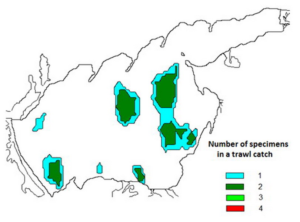
b) Autumn 2021.
Figure 1: Spatial distribution of Acipenser gueldenstaedtii in the Sea of Azov in 2021 (based on research of the Institute of Fisheries and Marine Ecology, Berdiansk, Ukraine).
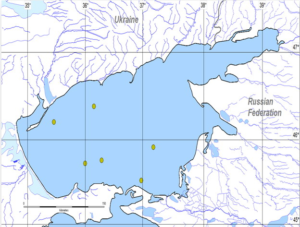
Figure 2: Occurrence locations of Acipenser stellatus in the Sea of Azov in 2021 (based on research of the Institute of Fisheries and Marine Ecology, Berdiansk, Ukraine).
Concerning the Black Sea (its North-Western part), stellate sturgeon is the most abundant sturgeon species here (Figure 3). Also here is possible to see rare specimens of Russian sturgeon and Huso huso (beluga) as by-catch. Acipenser ruthenus (sterlet) is enough frequent in Danube including its delta [1].
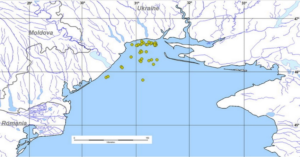
Figure 3: Occurrence locations of Acipenser stellatus in the North-Western part of the Black Sea in 2021 (based on research of the Institute of Fisheries and Marine Ecology, Berdiansk, Ukraine).
All sturgeon species fishery is absolutely prohibited in Ukraine since 2000, and the all Acipenseridae species, historically described for the Ukrainian water bodies, have been included to the National Red Book in 2009.
An important step towards implementation of the strategy for conservation and restoration of sturgeon populations was the adoption of the “Action Plan for the Conservation of Sturgeons (Acipenseridae) in Ukraine for 2021-2030”, approved by the Ministry of Environmental Protection and Natural Resources of Ukraine in 2020. This Action Plan provides implementation a number of important measures for sturgeon wild populations conservation, what includes:
- legislation development focusing on sturgeon species protection;
- strenghtening technical capacity of governmental nature protection bodies to be sure no illegal use of Acipenseridae;
- special measures for keeping well ecological state spawning migration ways of Acipenseridae spp.;
- growing capacity sturgeon restocking aquaculture complexes to better support of wild sturgeon populations by fingerlings release;
- research capacity development concerning Acipenseridae studies, what should allow to have better assessment of wild sturgeon populations status and comprehensive scientific advice [2].
Regarding the measures taken by Ukraine to ensure protection of wild sturgeon populations, in 1999 Ukraine joined the Convention on International Trade in Endangered Species of Wild Fauna and Flora (SITES), thereby by joining coordinated international efforts to prevent illegal trade in endangered species, and since the first year the State Agency of Melioration and Fisheries of Ukraine performs the functions of the Ukrainian CITES Management Authority on sturgeon species.
It should be noted that special attention is given to the issue of preventing illegal trade in caviar, as the most expensive food product, especially in terms of introducing appropriate labeling, and not only for international trade, but also on the domestic market.
The CITES Scientific Authority functions on sturgeon species in Ukraine currently are performed by IFME. There are realized in this context the all possible activities to create and ensure the effectiveness of a national system of genetic expertise to ensure identification and origin of sturgeon fish and products of them. Own large collection of genetic samples of sturgeon fish species was created and constantly replenished by IFME (Figure 4).
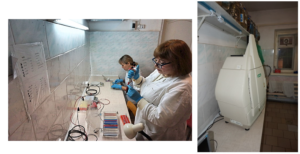
Figure 4: Genetic research laboratory of the Institute of Fisheries and Marine Ecology.
Taking into account, that last decades only Danube is keeping a status of important spawning freshwater body for anadromous sturgeon species, artificial sturgeon reproduction always had an extremely high importance for restocking sturgeon wild populations in the Azov Sea basin and in the Black Sea basin.
Historically, based on natural circumstances, Ukraine is conducting artificial reproduction of wild sturgeon populations mostly on the Black Sea basin. Here Ukraine has well-functioning Dnieper sturgeon hatchery (Figure 5), which is producing and releasing up to 1.6 million sturgeon fingerlings yearly. Released sturgeon species are Acipenser ruthenus (sterlet – the most in general fingerlings amount), Russian sturgeon and stellate sturgeon (Table 1).
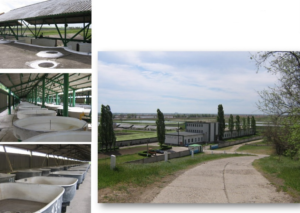
Figure 5: Dnieper sturgeon hatchery (Kherson oblast, Ukraine).
guelden-staedtii stellatus ruthenus guelden-staedtii ruthenus
Years
Amount of fingerlings released, thousand individuals
Dnieper
Danube
Acipenser
Acipenser
Acipenser
Acipenser
Acipenser stellatus
Acipenser
2005
354
0
39
0
0
0
2006
112
6
60
0
0
0
2007
601
0
0
0
0
0
2008
1057
39
22
0
0
0
2009
1031
0
0
0
0
0
2010
612
0
426
0
0
0
2011
541
0
512
0
0
0
2012
332
0
926
0
0
0
2013
303
0
1027
0
0
0
2014
305
0
1005
0
0
0
2015
0
0
1468
0
2
0
2016
0
0
1458
0
0
0
2017
0
0
1612
0
0
0
2018
305
0
1310
0
0
0
2018
0
0
1628
0
0
0
2019
152
0
1400
0
0
0
2020
103
52
1398
0
0
0
2021
0
0
1612
0
0
10
Additionally to sturgeon restocking in Dnieper area, two releases of Acipenser ruthenus fingerlings to Danube have been done last decade: 2 thousand specimens in 2015, and 10 thousand specimens in 2021. These restocking actions have been technically realized by Ukrainian private aquaculture company “Odessa sturgeon breeding complex” LLC, and in 2021 it has occurred in cooperation with the World Wide Fund for Nature Ukraine (WWF-Ukraine). About 1 thousand of released juveniles were marked with special external visual labels.
Also 2 thousand Acipenser ruthenus fingerlings were released in April, 2022, to Dniester river, as a result of fruitful collaboration of aquaculture company “ISHKHAN” with Chernivtsi National University, with support of Ukrainian governmental and non-governmental nature protection organizations.
Artificial reproduction of the Azov Sea basin sturgeon populations has been almost stopped since 2009, when the all Acipenseridae species have been included to the Red Book of Ukraine. No one Ukrainian state sturgeon restocking aquaculture complex has been built for the Sea of Azov since 1992, and such sturgeon populations restocking has been technically realized by private aquaculture companies capacities all years before 2009 (Table 2). gueldenstaedtii stellatus gueldenstaedtii stellatus
Years
Acipenser
Acipenser
Years
Acipenser
Acipenser
1991
180
22
2004
514
0
1992
230
0
2005
0
0
1993
432
0
2006
49
0
1994
2135
0
2007
23
0
1995
1120
0
2008
0
0
1996
2950
0
2009
223
0
1997
1143
418
2010
0
0
1998
1493
917
2011
0
0
1999
2340
129
2012
0
0
2000
1325
0
2013
0
0
2001
1245
0
2014
0
0
2001
1325
0
2015
0
0
2003
654
0
2016*
190,0
0
Only 2016 year was an exclusion, because this year about 190 thousand Russian sturgeon fingerlings have been released to the Sea of Azov (Figure 6). These fingerlings have been grown from several Russian sturgeon mature specimens of the Azov Sea population kept in private sturgeon broodstock farms.
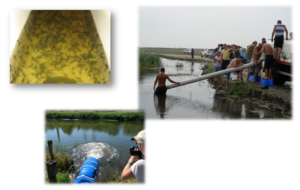
Figure 6: Release of Acipenser gueldenstaedtii fingerlings to river Kalmius on the basin of the Sea of Azov in 2016.
Unfortunately, developing wild sturgeon populations restocking activities in Ukraine have met strong obstacle as the Russian aggression in a form of hybrid war against Ukraine, what had a beginning in 2014 as occupation of the Crimea and large Ukrainian territories at the East of the country. And then it has continued as open massive Russian military aggression against Ukraine since February, 24, 2022.
Nowadays the Dnieper sturgeon hatchery is situated inside of the area of active military actions, and it excludes normal functioning of this hatchery current year.
Regarding commercial sturgeon aquaculture, most developing aquaculture technologies using in Ukraine for commercial sturgeon breeding are freshwater cages farms (located at different river reservoirs) and high intensive recirculating aquaculture systems (RAS).
Food products of sturgeon aquaculture have been classified always as a delicatessen with limited demand due to its high market value. During the USSR years commercial sturgeon farming in Ukraine was practiced in pond’s, cage’s and flowing pools’ fish farms (about 15 sturgeon breeding farms in total). The main objects of cultivation in the ponds were Bester (Huso huso X Acipenser ruthenus) and paddlefish (Polyodon spathula), and in the cages and pools – Bester, sterlet (Acipenser ruthenus) and Siberian sturgeon (Acipenser baerii). The sturgeon production in Ukraine in 1985-1990 was ranged from 130 to 180 tons per year.
The 1990s were a crisis time for Ukrainian aquaculture, and, above all, for its intensive forms. Due to a significant decline in the purchasing power of the population there was a reduction in demand for products of sturgeons. This led to the shutdown of a number of intensive aquaculture enterprises. By 2000 the number of sturgeon fish farms had fallen from 15 to 8.
With the beginning of the new century there was a gradual revival of sturgeon aquaculture in Ukraine. This was facilitated by growth of demand for fish products and emergence of full-fledged fish feeds of leading European brands in the domestic market. In 2011 there were about 10 sturgeon farms, including cage’s and RAS.
In 2021 were already more than 20 sturgeon farms, and at least half of this number were functioning as cage’s and RAS aquaculture systems. Also ponds aquaculture is presented as earlier (Figure 7).
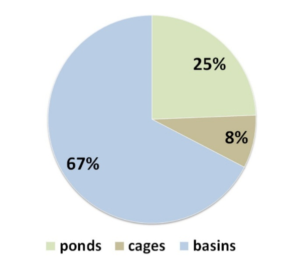
Figure 7: Use of different fish farm facilities for commercial sturgeon aquaculture in Ukraine in 2021 (on the data of the State Agency of Melioration and Fisheries of Ukraine).
Over the last decade there has been a trend of increasing the number of farms that combine farming of table sturgeon products with the production of edible black caviar with use of modern methods of ultrasound diagnosis of sex and maturity of fish.
Currently yearly sturgeon production in Ukraine is up to 100 tons, according to the official monitoring system. Most of this amount (about 80%) was produced with use of cages and flowing pools and RAS, and the rest has been received in ponds. Sturgeon aquaculture production (spatial distribution) by regions in 2021 is presented at Figure 8.
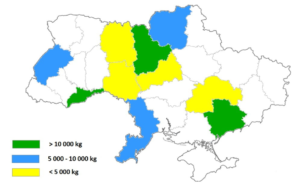
Figure 8: Commercial sturgeon aquaculture production in Ukraine in 2021 (on the data of the State Agency of Melioration and Fisheries of Ukraine).
At the next figures (Figure 9, 10) there are given a data on caviar and fertilized eggs export by Ukraine recent 5 years. As it is possible to state, despite the pandemic situation, sturgeon products export amount was more or less stable last years. At the same time we should note that Acipenseridae spp. aquaculture production trend was evidently negative, mostly due hard impact of the COVID-19 limiting requirements last years. General reduce of total Acipenseridae production since 2017 to 2021 is about 50%.

Figure 9: Caviar export from Ukraine (according to the CITES permits issued by the State Agency of Melioration and Fisheries of Ukraine).
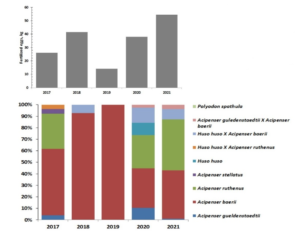
Figure 10: Fertilized eggs export from Ukraine (according to the CITES permits issued by the State Agency of Melioration and Fisheries of Ukraine).
The number of sturgeon broodstocks (all species, sexually mature individuals) kept on by Ukrainian aquaculture companies was about 55 thousand specimens in 2021. What exactly is now that is a question, in particular due Russian aggression against Ukraine, what is doing much damage to the Ukrainian economics, including Ukrainian aquaculture.
2022 year since beginning open Russian aggression against Ukraine has arisen absolutely shocking for the Ukrainian sturgeon aquaculture.
Most of sturgeon aquaculture enterprises in the Zaporizhia oblast (province) are in a zone of Russian occupation now, and this guides to destoying on sturgeon aquaculture in this region in a short time. It is very damaging for Ukraine, because there are kept rare alive Acipenseridae spp. broodstocks, in particular created decades ago by taking specimens if wild sturgeon populations in the Sea of Azov.
Also other important (in aspect of sturgeon aquaculture) Ukrainian regions much suffers because the war and Russian occupation, like as Kherson oblast (where is situated unique state sturgeon restocking enterprise – Dnieper sturgeon breeding hatchery). Hostilities touched sturgeon breeding companies in Kyiv oblast, Chernihiv oblast, Odessa oblast, Mykolaiv oblast, Dnipropetrovsk oblast etc.
Therefore, nowadays Ukrainian sturgeon aquaculture so needs support of side of both Ukrainian government and international institutions.
There are expected, even in case no more intensive hostilities and no add new areas Russian occupation, that sturgeon aquaculture production will reduce in 2022 till level 50% of the sturgeon production in 2021.
As shows a relevant study by the Ukrainian state institution “Methodological-Technological Aquaculture Center”, only about 50% of Ukrainian aquaculture companies are working in normal mode in September, 2022. About 40% aquaculture companies are working with low effectiveness, and 10% of aquaculture companies stopped their economical activities (Figure 11).
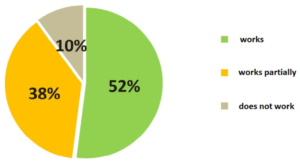
Figure 11: Ukrainian aquaculture economics in the situation of war of Russia against Ukraine: aquaculture companies status (on the data of the state institution “Methodological-Technological Aquaculture Center”, Kyiv, Ukraine).
In general, 72% of Ukrainian aquaculture companies have suffered from Russian aggression, losing more or less their economical potential (Figure 12).

Figure 12: Ukrainian aquaculture companies directly affected of war of Russia against Ukraine (on the data of the state institution “Methodological-Technological Aquaculture Center”, Kyiv, Ukraine).
Some Ukrainian aquaculture companies meet serious staff problems because people migration from hostilities areas
For the areas where no hostilities are going on, much technical problems on logistics are actual, what causes critical lack of imported sturgeon feed as well as the problems with export of Ukrainian production of sturgeons. As a consequence, most of Ukrainian sturgeon aquaculture companies meet financial capacity problems.
Huge water potential in Ukraine is an evident positive circumstance for sturgeon production growing [3].
The problems of sturgeon aquaculture development in Ukraine are, in particular:
- There is still insufficient demand in the domestic market for an expensive table sturgeon product. Ways of solutions: the use of modern technologies and materials in sturgeon farming to reduce the cost and market price of fish and enter the markets of other countries.
- Lack of production of quality fish feed in Ukraine. Feeds of domestic brands are still considered to be worth than imported feed at the expense of “price-quality”, and starter feeds are not yet produced in Ukraine. The problem could be solved by the construction of a feed plant in Ukraine by one of the world’s leading feed producers, such as BioMar, AllerAqua or Coppens. The expediency of the step is due to the fact that today in the intensive aquaculture of Ukraine for feeding fish use more than 2,000 tons of high-protein feed each year, and this amount is growing permanently.
- The development of cages sturgeon (and not only) farms restrains the legally difficult procedure of renting part of the area of water reservoirs of national importance. Since the adoption of the Law on Aquaculture in 2012, only one farm has achieved to lease of part of the Kaniv Reservoir for cage sturgeon farming. However, currently the State Agency of Melioration and Fisheries of Ukraine does much efforts especially to solve this problem by implementing needed changes to the national legislation.
- A significant number of aquaculture enterprises do not report on their activities, what causes lack in collected aquaculture data, especially in part of total production estimation. As the one of important keys to avoid this problem considered an improvement of existing responsibility rules, what is also the one of challenges for the State Agency of Melioration and Fisheries of Ukraine.
- There are almost no subsidies from the state to support the development of aquaculture. However, due to investments in the aquaculture sector, a significant increase in production and quality of sturgeon products is possible.
- Needing to improve scientific support of aquaculture sector. Limited capacity of Ukrainian scientific institutions, as well as limited access to the best World aquaculture practices do not contribute to the progressive development of production.
Conclusion
Development of sturgeon aquaculture both restocking hatcheries and commercial sturgeon farms is an important factor of conservation and restocking wild Acipenseridae spp. populations in natural water bodies of Ukraine and, at the same time, covering market demand on products of sturgeons. Huge water potential in Ukraine is an evident positive circumstance for sturgeon production growing. Besides, Ukrainian scientists and fish breeders have multiannual experience on sturgeon aquaculture for different nature and artificial conditions.
References
- Demchenko V, Khudiy O, Bushuyev S, Voloshkevych O, Hoch I, et al. (2021). Modern aspects of study and protection of sturgeon populations in Ukraine. Second edition. Riga: Izdevniecība “Baltija Publishing”. 70 p. (in Ukraine).
- Наказ Міністерства захисту довкілля та природних ресурсів України “Про затвердження Плану дій щодо збереження осетрових риб (родина Acipenseridae) в Україні на 2021-2030 роки” – № 391 від 28.12.2020 (2020).
- Fabio Massa, Ilhan Aydın, Davide Fezzardi, Bilal Akbulut, Alexander Atanasoff et al. (2021) Black Sea Aquaculture: Legacy, Challenges & Future Opportunities. Aquaculture Studies, 21:181-220.